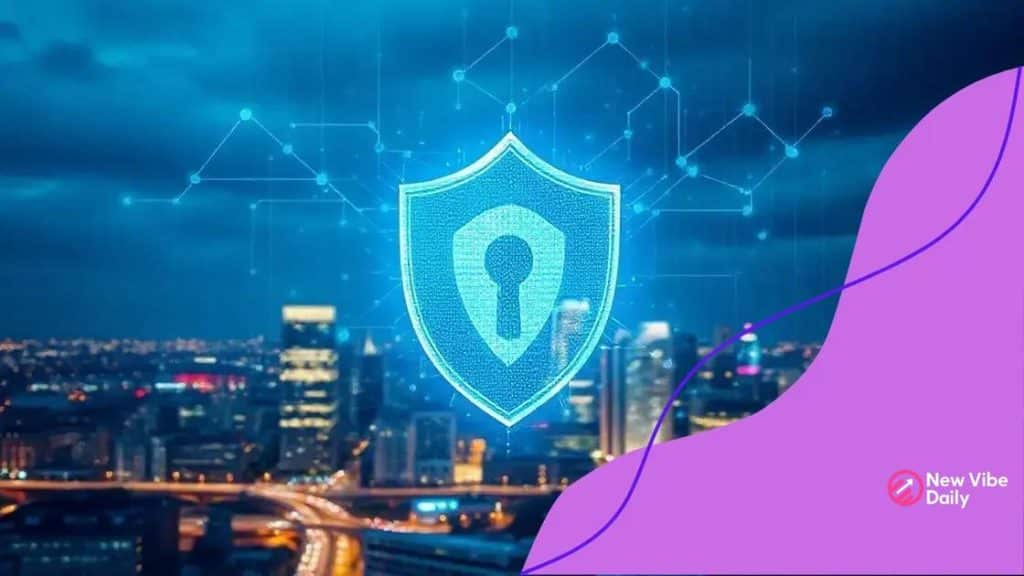UK cyber security threat: Are you prepared for it?

The UK faces increasing cyber threats, including AI-powered attacks, supply chain vulnerabilities, and ransomware-as-a-service, making it crucial for businesses to implement strong security measures and educate employees to mitigate risks.
The UK cyber security threat landscape is evolving rapidly, impacting individuals and businesses alike. How prepared are you to face these challenges? Let’s delve into the complexities of these threats and explore effective ways to safeguard ourselves.
Understanding the current landscape of cyber threats
Understanding the current landscape of cyber threats is essential in today’s digital world. These threats evolve rapidly, impacting everyone from individuals to large corporations. As technology advances, so do the tactics employed by cybercriminals, requiring continuous vigilance and adaptation to protect sensitive information.
Types of Cyber Threats
Cyber threats are varied and can include numerous risks. Below are some of the most common types that everyone should be aware of:
- Phishing attacks: Fraudulent attempts to obtain sensitive information by disguising as trustworthy entities.
- Ransomware: Malicious software that locks users out of their data until a ransom is paid.
- Malware: Software designed to disrupt, damage, or gain unauthorized access to computer systems.
These attacks not only compromise personal data but can also cripple businesses, leading to financial losses and reputational damage. Understanding these risks is the first step toward effective protection.
Recent Trends
Recent trends in cyber threats show an alarming increase in the sophistication of attacks. Cybercriminals are now utilizing artificial intelligence to enhance their strategies, making it more challenging to detect and prevent breaches. Moreover, the rise in remote work has created new vulnerabilities. Employees often access company networks from various devices, which can be targets for cyber threats.
Another concerning development is the rise in attacks against critical infrastructure, such as healthcare and utilities. These sectors are particularly vulnerable due to the high stakes involved, as outages can have dire consequences. Keeping informed about these trends allows individuals and businesses to adapt their security measures effectively.
Overall, a proactive approach is crucial when navigating the complex world of cyber threats. By remaining educated and aware of the types of attacks and recent trends, you can significantly reduce your risk of falling victim to cybercrime.
Common types of cyber attacks targeting the UK
Cyber attacks can take many forms, and recognizing these common types of cyber attacks targeting the UK is crucial for effective prevention. Each type has its unique characteristics and methods of execution, making awareness an important part of cyber security. Let’s explore some of the most prevalent forms of attacks today.
Phishing Attacks
One of the most common methods used by cybercriminals is phishing. These attacks often come through emails that appear to be from legitimate sources aiming to steal personal information. Victims are tricked into clicking on malicious links or providing sensitive data.
- Look out for emails with poor grammar and urgent requests.
- Check the sender’s email address carefully.
- Be cautious with links that do not match the company’s official website.
Ransomware
Ransomware is another significant threat that has grown increasingly common. This type of malware can lock users out of their systems until a ransom is paid. Businesses and individuals alike have fallen victim to ransomware attacks.
- Regular data backups can help mitigate the damage.
- Keep your software and security systems updated.
- Educate all users, as human error is often the entry point.
Such attacks can paralyze organizations, disrupt operations, and lead to substantial financial losses and recovery costs. Understanding this threat is the first step to safeguarding your data.
Distributed Denial of Service (DDoS)
A DDoS attack aims to overwhelm a system with traffic to make it unavailable to users. This type of attack can severely disrupt services, leading to significant downtime for businesses.
Taking preventive measures, such as investing in infrastructure that can absorb high traffic volumes, helps protect against these attacks. Awareness of this type of attack can save companies from catastrophic interruptions.
Cyber attacks remain a serious risk in the UK, affecting everyone from individuals to large enterprises. By understanding the different types, you can better prepare yourself and your organization.
Best practices for boosting UK cyber security

Boosting UK cyber security requires a proactive approach and the implementation of best practices. By understanding and applying these strategies, individuals and businesses can enhance their defenses against potential threats. Here, we outline some effective practices that can make a difference.
Regular Software Updates
Keeping software up to date is one of the simplest yet most effective ways to protect against cyber threats. Updates often contain patches for security vulnerabilities that cybercriminals could exploit. Regularly updating operating systems, applications, and security software is crucial.
- Enable automatic updates whenever possible.
- Set reminders to check for updates if they are not automatic.
- Regularly review settings to ensure comprehensive coverage.
Strong Password Management
Using strong and unique passwords is vital in safeguarding accounts. Weak passwords are a common target for attackers. Employing a password manager can help maintain secure, unique passwords for all accounts.
- Choose passwords with a mix of letters, numbers, and symbols.
- Avoid using easily guessable information like birthdays.
- Change passwords regularly and especially after known breaches.
Besides passwords, enabling two-factor authentication (2FA) adds an extra layer of security, making unauthorized access much more difficult.
User Education and Awareness
Education on cyber threats plays a central role in prevention. Users who are informed about potential risks and attack methods are less likely to fall victim to scams. Organizations should conduct regular training sessions to keep staff updated.
Essential topics to cover may include:
- Identifying phishing emails.
- Recognizing suspicious links and attachments.
- Safe internet browsing practices.
By fostering a culture of security awareness, businesses can empower their employees to be the first line of defense against cyber attacks.
Implementing these best practices will significantly strengthen cyber security across the UK. Staying informed and regularly reviewing security measures can help prevent potential cyber threats.
The role of government in enhancing security measures
The role of government in enhancing security measures is critical in today’s digital age. Governments actively shape policies that protect individuals and organizations from cyber threats. These policies are essential for providing a structured response to the increasing complexity of cyber attacks.
Creating Standards and Regulations
One of the primary responsibilities of governments is to create and enforce standards and regulations for cyber security. This includes establishing guidelines for businesses to follow in order to protect sensitive information.
- Governments provide frameworks that organizations must adhere to.
- Compliance with these regulations helps minimize risks of data breaches.
- Regular updates to these standards ensure they evolve with new threats.
Funding and Support Initiatives
Governments also play a role in funding cyber security initiatives. These initiatives can include public awareness campaigns aimed at educating citizens about cyber risks and safe practices.
Additionally, governments may provide support for research in cyber security technologies. This funding encourages innovation and advancement in protective measures, enabling businesses and individuals to better defend themselves.
Collaboration with Private Sector
Another important aspect of government involvement is collaboration with the private sector. By working together, governments and businesses can share valuable information about emerging threats and develop effective countermeasures.
Partnerships can lead to:
- Improved communication on cyber threats.
- Joint training programs to enhance readiness.
- Better resource allocation for security efforts.
This collaborative effort fosters a more resilient community against cyber attacks. With the combined strength of government action and private sector innovation, the overall security environment can be significantly enhanced.
Future trends in cyber threats for UK businesses
As technology evolves, so do the future trends in cyber threats for UK businesses. Staying informed about these trends is vital for effective risk management and mitigation. Understanding these emerging threats helps organizations prepare and strengthen their defenses.
Increase in AI-Powered Attacks
One significant trend is the rise of AI-powered attacks. Cybercriminals are increasingly using artificial intelligence to automate and enhance their attack strategies. This can lead to more sophisticated phishing attempts and malware designed to bypass traditional security measures.
- AI can analyze large amounts of data to identify vulnerabilities.
- Automated attacks can be executed faster than manual methods.
- Organizations must adopt AI-based defenses to counter these threats.
Supply Chain Attacks
Another worrying trend is the rise in supply chain attacks. These attacks target businesses by compromising third-party vendors or suppliers. As companies rely more on external partners, the risk of these types of attacks increases.
Threat actors can gain access through:
- Vulnerabilities in software updates from suppliers.
- Unsecured systems of third-party vendors.
- Weak security practices among partners.
Rise of Ransomware-as-a-Service
The availability of Ransomware-as-a-Service (RaaS) is another trend changing the cyber threat landscape. This model allows less skilled attackers to launch sophisticated ransomware attacks by using tools created by other criminals.
Organizations need to be aware of:
- Increased accessibility of ransomware tools.
- More frequent and devastating attacks from less experienced hackers.
- The importance of comprehensive backup strategies to mitigate damage.
These future trends highlight the necessity for UK businesses to invest in robust security measures and stay vigilant against evolving threats. By understanding these issues, organizations can better prepare for the continuously changing landscape of cyber security.
In conclusion, the landscape of cyber threats is constantly changing, making it vital for UK businesses to stay informed and proactive. By understanding emerging trends such as AI-powered attacks, supply chain vulnerabilities, and ransomware-as-a-service, organizations can better prepare themselves against potential risks. Implementing strong security measures, educating employees, and collaborating with government initiatives are essential steps to enhance overall cyber resilience. The key to staying secure lies in continuous monitoring, adaptation, and the willingness to evolve.
FAQ – Common Cyber Threats for UK Businesses
What are the most common types of cyber attacks targeting UK businesses?
The most common types of cyber attacks include phishing, ransomware, and supply chain attacks, each targeting different vulnerabilities.
How can AI impact the future of cyber threats?
AI can enhance the sophistication of cyber attacks, enabling faster and more automated methods that can bypass traditional security measures.
What measures can businesses take to prevent cyber attacks?
Businesses should implement strong password policies, conduct regular training, and update software to protect against vulnerabilities.
Why is employee education important in cyber security?
Educating employees about cyber threats and safe practices can significantly reduce the risk of falling victim to attacks, making them the first line of defense.






